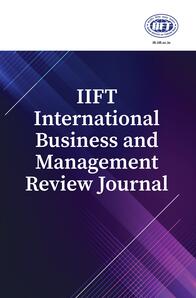
1Department of Economics, Government Degree College Karsog, District Mandi, Himachal Pradesh, India
2Department of Economics, Rajiv Gandhi Government Degree College, Chaura Maidan, Shimla, Himachal Pradesh, India
3HPUBS, Himachal Pradesh University, Shimla, Himachal Pradesh, India
Creative Commons Non Commercial CC BY-NC: This article is distributed under the terms of the Creative Commons Attribution-NonCommercial 4.0 License (http://www.creativecommons.org/licenses/by-nc/4.0/) which permits non-Commercial use, reproduction and distribution of the work without further permission provided the original work is attributed.
To foster economic development, generation of jobs, reduction in poverty and promotion of equality, the role of micro-, small- and medium-sized enterprises (MSMEs) becomes crucial in every economy of the world. The MSME sector encourages equitable distribution and inclusive growth as an engine of economic progress. MSMEs have the highest employment growth rate, which has a positive impact on export and industrial growth. The primary objective of this article is to analyse MSMEs’ performance and their contribution to India’s inclusive prosperity. Over the previous two decades, the Indian economy has performed well but the rewards of this expansion have not been distributed fairly. The impact of MSMEs on various socio-economic groups and the engagement of women in India has been studied using a variety of metrics, including employment generation, regional industry distribution and entrepreneurship. The information used in this article was gathered from secondary sources such as Annual MSMEs Reports and the Handbook of Indian Economy Statistics. According to the study’s findings, the MSME sector contributes to inclusive growth in India by offering substantial job possibilities, ensuring that industries are distributed fairly and promoting entrepreneurship among women from underprivileged backgrounds. ‘Make in India’, ‘Digital India’ and other initiatives have created new possibilities for the MSME sector to grow significantly during the coming 10 years.
MSMEs, employment, inclusive growth, entrepreneurship, economic development
Anjum, B., & Tiwari, R. (2012). Role of manufacturing industries in India for inclusive growth. ZENITH International Journal of Business Economics & Management Research, 2(1), 97–104.
Das, D. K. (2021). Role of micro, small, and medium enterprises (MSMEs) in economic development of India. International Journal of Multidisciplinary Research and Explorer (IJMRE), 1(9), 1–7.
Lama, P. (2013). Micro, small and medium enterprises (MSME) in India: Problems and prospects. Business Studies, XXXIII & XXXIV, 2013 & 2014, 106–116.
Manna, P., & Mistri, T. (2017). Status of micro, small and medium enterprises (MSME) in India: A regional analysis. IOSR Journal of Humanities and Social Science, 22(9), 72–82.
Mohanty, J. J. (2018). A study on micro, small and medium enterprises (MSME) in India: Status and its performance. International Journal of Research and Scientific Innovation, V(V), 105–114.
Ministry of Micro, Small and Medium Enterprises. (n.d.). MSME Annual Report (Various Issues). Government of India.
Singh, A. (2021). MSMEs sector in India: Current status and prospect. International Journal of Innovative Research in Engineering & Management (IJIREM), 8(4), 42–45.
Srinivas, K. T. (2013). Role of micro, small and medium enterprises in inclusive growth. International Journal of Engineering and Management Research, 3(4), 57–61.
Zanjurne, P. (2018). Growth and future prospects of MSME in India. International Journal of Advanced Engineering, Management and Science (IJAEMS), 4(8), 608–614.